I often have text in columns and need to replace some things without clobbering similar stuff on the same line... a simple example follows:

Suppose I have highlighted the text in grey with vim visual block mode, and want to replace 80 with 81; however, I only want replacements within the highlighted visual block.
I have already tried Cntlv : s/80/81/g; however, that replaces text inside and outside the visual block. (based on Randy's feedback, it's because : s is a line-wise command).
I know I could use a line-wise visual block replace in this particular instance ( Shiftv : s/80\.1/81.1/g ); however, I'm trying to find a general solution for the problem of having no easy means to replace within a non line-wise visual block (isn't this the kind problem that visual block mode is supposed to help solve?). Answers requiring confirmation like : s/80/81/gc, are not what I am looking for.
I will restate the question for clarity: How can I replace 80 with 81 by using vim's visual block mode highlight?